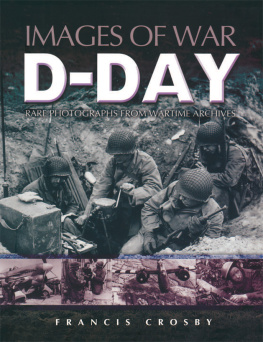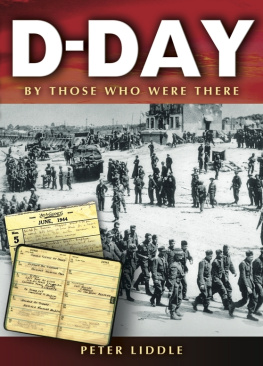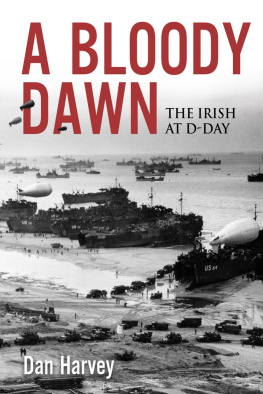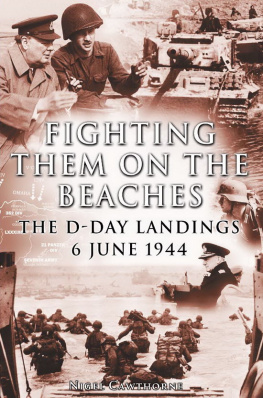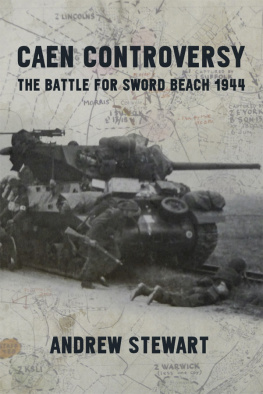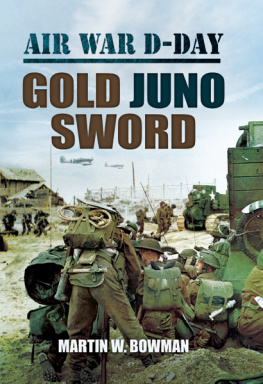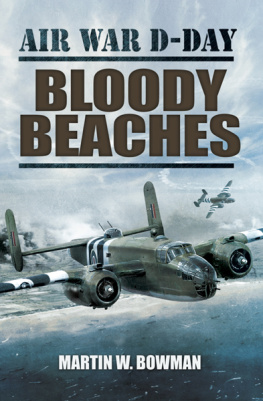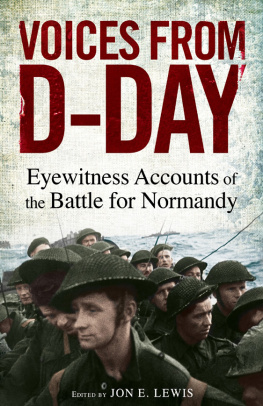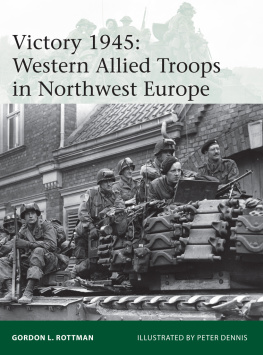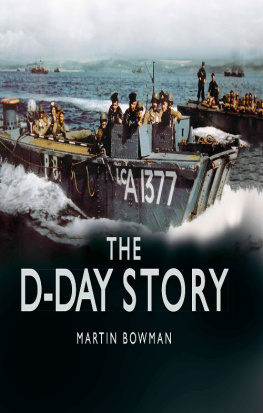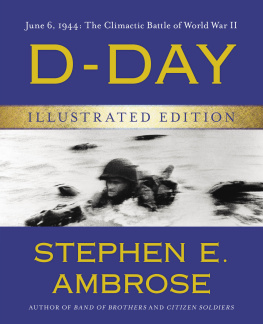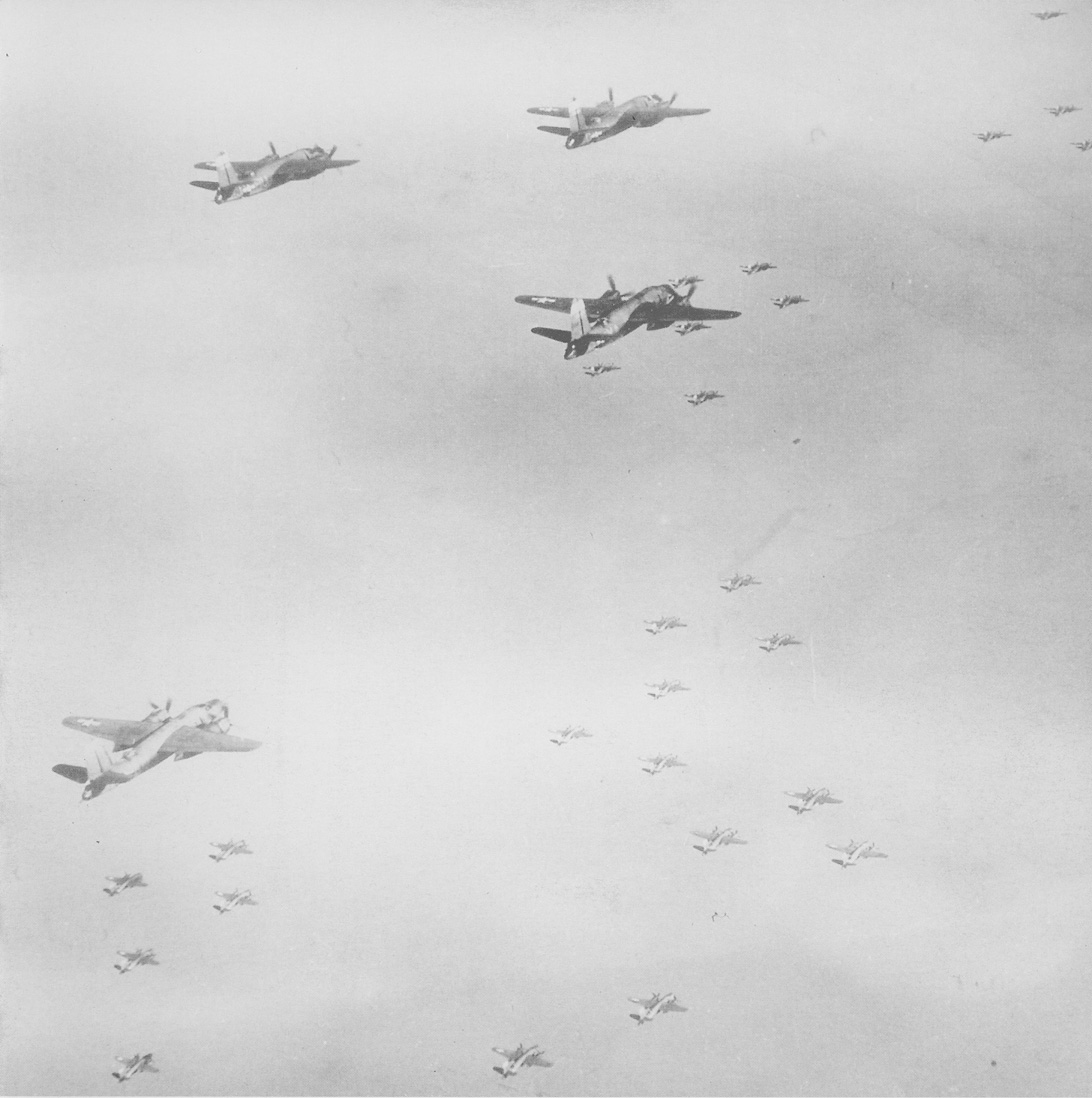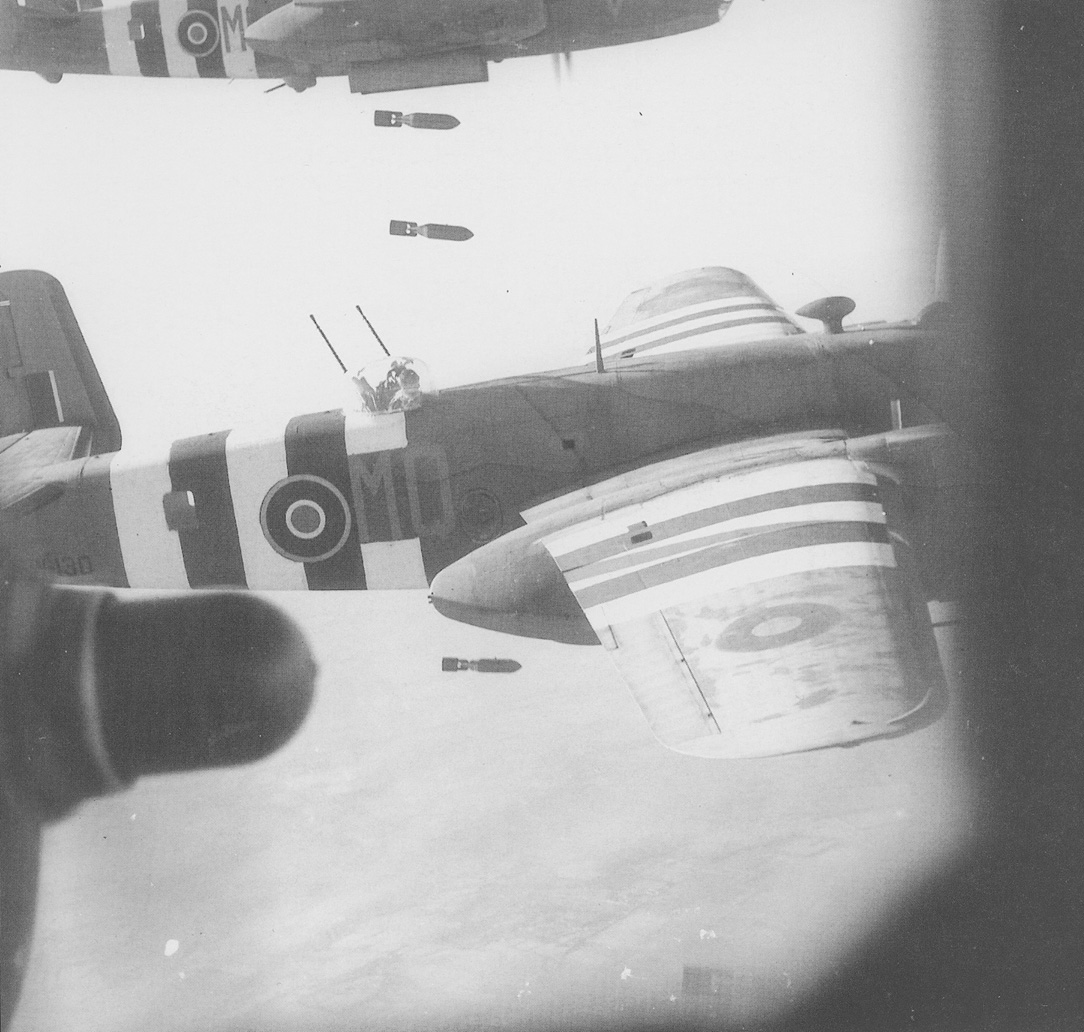Images of War
D-Day
RARE PHOTOGRAPHS FROM WARTIME ARCHIVES
Francis Crosby
First published in Great Britain in 2004, and reprinted in 2005 by
Pen & Sword Military
an imprint of
Pen & Sword Books Ltd.
47 Church Street, Barnsley,
South Yorkshire.
S70 2AS
Copyright Francis Crosby 2004, 2005
A CIP record for this book is available from the British Library
ISBN 1-84415-077-1
The right of Francis Crosby to be identified as Author of this
Work has been asserted by him in accordance with the
Copyright, Designs and Patents Act 1988.
British Library Cataloguing-in-Publication Data
A CIP catalogue record for this book is available from the British Library
All rights reserved. No part of this book may be reproduced or
transmitted in any form or by any means, electronic or mechanical
including photocopying, recording or by any information storage
and retrieval system, without permission from the Publisher in writing.
The photographs in this book have been obtained and reproduced
with the kind permission of the Imperial War Museum and the
United States Military Archives. The photograph captions indicate
the source (IWM or USA) followed by the reference number.
Those marked PC were supplied by Peter Coles.
Typset in Gill Sans Light 10pt
Printed and bound CPI
Pen & Sword Books Ltd incorporates the Imprints of Pen &
Sword Aviation, Pen & Sword Maritime, Pen & Sword Military,
Wharncliffe Local History, Pen and Sword Select, Pen and Sword
Military Classics and Leo Cooper.
For a complete list of Pen & Sword titles please contact
Pen & Sword Books Limited
47 Church Street, Barnsley, South Yorkshire, S70 2AS, England
E-mail: enquiries@pen-and-sword.co.uk
Website: www.pen-and-sword.co.uk
CONTENTS
Part 1
Preparation
Part 2
The Landings
Part 3
Establishing the Beach-head
Part 4
Moving Inland
Part 5
Sustaining the Advance
Part of the airborne armada heading for Normandy. Vessels of the Allied invasion fleet are close to the French shore where fires can be seen burning on the beaches. 250 RAF gliders and their towing aircraft flew to the Caen district on the evening of 6 June in the largest main glider-descent of the campaign at that point. (IWM CL29)
Had it not been for stormy weather in the Channel area, June 5 would have gone down in history as D-Day, the day that Britain and the Allies returned to France in force with the aim of liberating not only France but the rest of Europe from Nazi domination.
Although the weather was not predicted to improve dramatically, Allied met experts anticipated a brief improvement on the 6th. Just as invaders through the ages have relied on the most elemental factors to improve their chances of success, Eisenhower, Supreme Allied Commander, was aware that the moon and tides would not be so favourable again for some time. With that in mind like gave the go signal for the biggest seaborne invasion in human history.
Planning for the invasion had been underway since the Americans joined World War II and by Spring 1944, everything was in place. Almost exactly four years earlier the British Expeditionary Force had been forced back by a blistering German advance to Dunkirk. This time the Allies had to hit the Germans hard and with the element of surprise while enjoying air superiority over the invasion areas. The planners decided to attack France where the Germans were not expecting it, on the Cotentin Caen stretch of the French coast. Although it was a longer and more hazardous journey than that to the expected landing area of the Pas de Calais, the beaches of Normandy were considered more suitable and the German defences were known the be lighter.
During the first six months of 1944, the Allies concentrated naval, land, and air forces in Britain to prepare for Operation OVERLORD, the assault on Hitlers Fortress Europe. Allied troops trained separately and jointly for the operation while the planners honed the plan to perfection to make maximum use of the massive force and resources at their disposal. Nine army divisions (three airborne and six infantry) from the United States, Britain and Canada trained and rehearsed their roles in the meticulously planned operation.
As D-Day dawned, while more than 5,000 ships from battleships to landing craft, headed for France, more than 1,000 transport aircraft dropped paratroopers to secure the flanks and beach exits of the assault area. Amphibious craft landed troops on five beaches along fifty miles of Normandy coast. In the eastern sector the British and Canadians landed on what were codenamed Gold, Juno and Sword Beaches while the Americans landed on two beaches in the west, Utah and Omaha.
By the end of D-Day, the Allies had landed as many as 155,000 troops in France by sea and air; several thousand vehicles including tanks, hundreds of artillery pieces and about 4,000 tons of supplies and, astonishingly, had achieved complete surprise in doing it. Hitlers Atlantic Wall had been breached but the battle was far from over. The bridgehead had to be secured and expanded to prevent the Wehrmacht from driving the Allies back into the sea. As those brave men fought their way up the beaches of Normandy, their steps were the first on the road to victory in Europe. This book, featuring images from the Imperial War Museums outstanding Photographic Archive and the United States Military Archives, is dedicated to those who fought to free the world of tyranny.
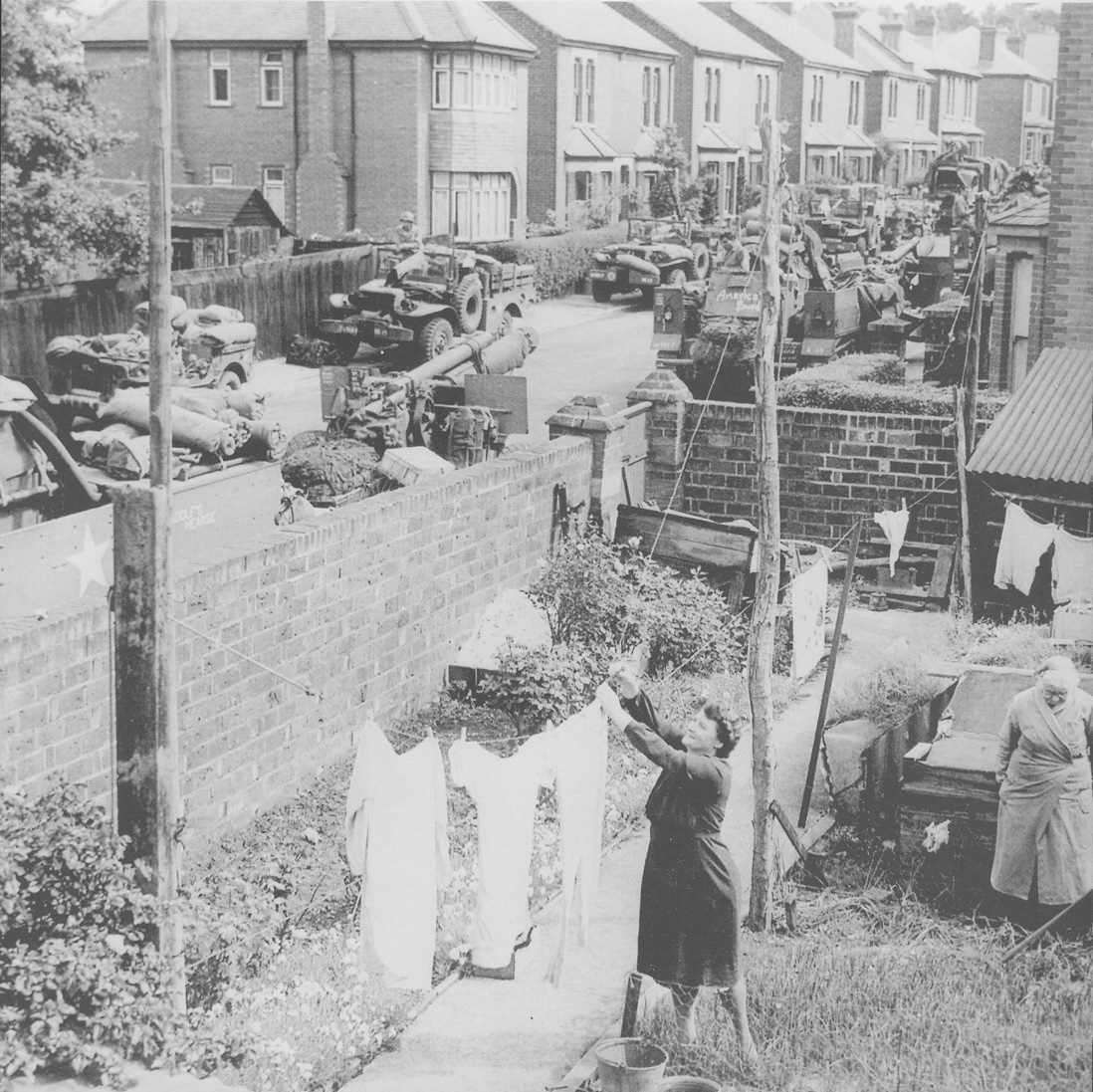
A woman hangs out her laundry in a south coast (possibly Southampton) garden on 5 June 1944; the road behind is full of parked vehicles and armour. Much of the south coast became a huge car park for Allied armies. (IWM CL19)
US Ninth Air Force Army Air Force, Martin B-26 Marauder medium-bombers setting out across the North Sea from UK bases on a mission against enemy E-boat pens at Ijmuiden, Holland, on 26 March 1944. This mission was part of the prelude to D-Day as the Allies tried to eliminate the German Navy and render it ineffective or at least keep it in its bases.
The later variants of the B-26 could carry a bomb load in excess of 3,000 lb and had an effective range of 1,100 miles. The aircraft was heavily armed and, by 1944, Marauders of the US 9th Air Force were returning the lowest loss rate on operational missions of any aircraft in the European theatre. (IWM EA 19186)
North American B-25 Mitchell IIs of No.226 Squadron RAF, 137 Wing, part of the 2nd Tactical Air Force. Note that both the aircraft pictured are in the middle of a bombing run.
The B-25 Mitchell had entered USAAF service in 1941 and was made famous by the April 1942 Doolittle raid against Tokyo from the carrier USS Hornet.
Under the Lend-Lease deal between Britain and the US, the RAF acquired over 800 examples of this robust and reliable bomber. The first entered RAF service with Nos 98 and 180 Squadrons in September 1942. From August 1943 they operated as part of the 2nd Tactical Air Force, carrying out pre-invasion attacks on targets in Northern France as well as on doodlebug sites in the Pas de Calais.

